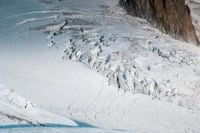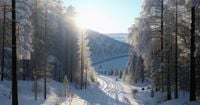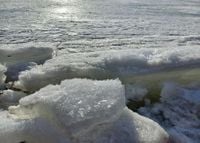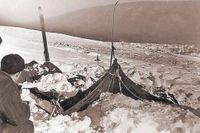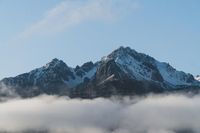Swiss scientists have proposed a new explanation for the tragic deaths of nine tourists at Dyatlov Pass in 1959, suggesting that a rare natural phenomenon—a snow slab avalanche—could have been the cause. According to their research published in the journal Communications Earth & Environment, the conditions at the time could have led to the formation of unstable layers of snow on the slope of Kholatchakhl mountain, which may have triggered a sudden avalanche even on a gentle slope.
The Dyatlov Pass incident, which occurred in February 1959, has long been shrouded in mystery, spawning numerous theories ranging from secret military tests to supernatural interventions. However, researchers Alexander Puzrin and Johan Gaume have taken a scientific approach, focusing on the physics of snow and meteorology to provide a more convincing explanation based on their computer modeling.
According to Puzrin, the key element in their hypothesis is the so-called "snow slab," a dense layer of snow that can collapse unexpectedly under certain external factors. The researchers explained that a katabatic wind blowing down the slopes could have caused a gradual accumulation of snow, increasing the load on the slope until a crack formed, triggering the avalanche.
In their reconstruction, Puzrin and Gaume suggest that the avalanche struck the tent during the night while the tourists were sleeping. Startled and injured, the tourists fled the shelter in a panic, failing to put on warm clothing as they braved temperatures plunging below -25°C. This hasty exit likely led to severe hypothermia, ultimately resulting in their deaths.
Some bodies were discovered far from the tent, without shoes and in only their underwear, which aligns with the theory that stress and shock can lead individuals to take irrational actions. The injuries found on some of the victims, including broken ribs and skull fractures, had previously raised doubts about the avalanche theory due to the lack of visible external injuries.
Despite the compelling nature of their findings, Puzrin and Gaume caution that their research does not definitively solve the mystery of the Dyatlov Pass. The absence of survivors and the loss of crucial evidence leave many questions unanswered. The researchers emphasize that their conclusions are based on scientific evidence, including simulations that recreated the meteorological conditions of February 1959, which demonstrated how a snow slab could have formed and collapsed.
The Dyatlov Pass incident has transcended its origins as a mere hiking tragedy to become a cultural phenomenon, inspiring books, films, and documentaries. Each new theory, whether it involves UFOs or espionage, fuels public fascination and debate. Yet, none have been universally accepted as conclusive.
As the Swiss researchers note, the complexity of the conditions surrounding the tragedy makes it unlikely that a definitive answer will ever emerge. Nevertheless, their scientific approach provides one of the most rigorously supported explanations in decades, bringing new interest to a case that has captivated the public imagination for over sixty years.
In light of their findings, the Dyatlov Pass may remain an enduring enigma, but the application of scientific inquiry may bring us closer to understanding the fateful events that unfolded on that cold winter night.
